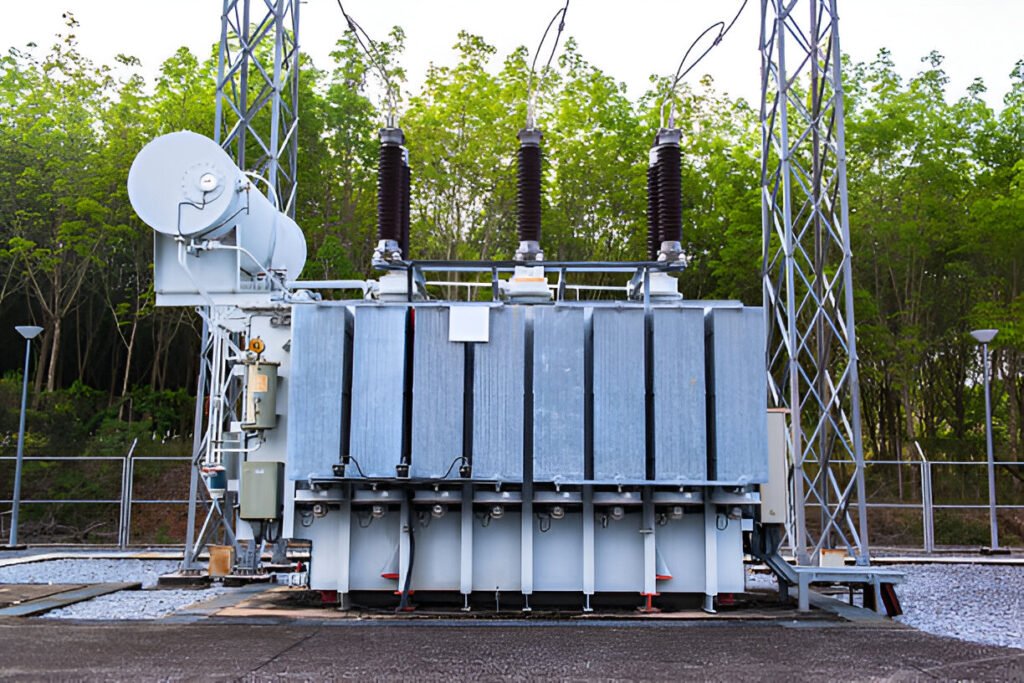What Is a Distribution Transformer
A distribution transformer steps down high voltage from power lines to a lower voltage for homes and businesses, typically 120/240 volts.
Read More
The vector group is a fundamental characteristic of three-phase transformers that describes the phase relationships and connections of the windings. Selecting the appropriate vector group is essential for ensuring proper system operation, load compatibility, and protection coordination. This article explores the factors influencing vector group selection and provides guidance on choosing the right vector group for various applications.

Vector group notation is a standardized method of representing the phase shift and connection arrangement of transformer windings. It consists of two main components: phase shift notation and neutral point treatment.
Phase shift notation indicates the angular displacement between the high-voltage (HV) and low-voltage (LV) windings. It uses uppercase letters for the HV side (D, Y, Z) and lowercase letters for the LV side (d, y, z), followed by numbers representing the phase shift in multiples of 30 degrees.
Some common examples include:
The HV side connection is denoted by uppercase letters:
The LV side connection is represented by lowercase letters:
The number following the HV and LV connection letters represents the phase shift between the windings in multiples of 30 degrees. For example:
The presence or absence of a neutral point on the HV and LV sides is indicated by the letters N (for HV) or n (for LV) in the vector group notation.
If neither N nor n appears in the vector group notation, it means that no neutral point is present on either side of the transformer (e.g., Dd0, Yz11).
Several factors must be considered when selecting the appropriate vector group for a transformer. These include system configuration, load characteristics, parallel operation, and fault current limitation.
The vector group must be compatible with the existing system configuration and grounding requirements. The presence or absence of a neutral point on the transformer windings affects the grounding options and the flow of zero-sequence currents during asymmetrical faults.
The load characteristics, such as the balance between phases, power factor, and harmonic content, influence the choice of vector group. Delta-connected windings can trap triplen harmonics, preventing their propagation to other parts of the system. Star-connected windings with a neutral point can supply unbalanced loads and single-phase loads.
When transformers are required to operate in parallel, their vector groups must be compatible to ensure proper load sharing and avoid circulating currents. Transformers with the same vector group can be paralleled without issues, while those with different vector groups may require additional considerations or modifications.
The vector group affects the magnitude and distribution of fault currents in the system. Delta-connected windings can limit the flow of zero-sequence currents during earth faults, reducing the fault current levels. The vector group also influences the coordination of protection devices, such as overcurrent relays and fuses.
Different vector groups are suited for various applications, depending on the specific requirements of the system. Some common applications include:
Distribution transformers often use vector groups such as Dyn11 or Dyn5. The delta-connected HV winding provides a stable neutral point for grounding and reduces the impact of harmonics, while the star-connected LV winding allows for the supply of unbalanced loads and single-phase consumers.
Generator step-up transformers typically employ the YNd11 vector group. The star-connected HV winding with a neutral point enables the grounding of the generator neutral, while the delta-connected LV winding blocks the flow of third-harmonic currents and provides a stable voltage reference.
Interconnecting transformers between different voltage levels often use the YNyn0 vector group. This configuration allows for the grounding of both the HV and LV neutrals, facilitating the coordination of earth fault protection and the control of ground fault currents.
Choosing an incorrect vector group can lead to various problems in transformer operation and system performance. Some of the consequences include:
Incorrectly matched vector groups in parallel-connected transformers can result in circulating currents between the units, leading to overheating and reduced efficiency. This can accelerate the aging of transformer insulation and increase the risk of failures.
An improper vector group selection can cause voltage imbalances and undesired phase shifts between the primary and secondary sides of the transformer. This can affect the operation of connected loads, leading to reduced efficiency, increased losses, and potential damage to equipment.
The vector group influences the behavior of protection devices, such as overcurrent relays and fuses. An incorrect vector group can disrupt the coordination of protection schemes, leading to inadequate fault coverage, nuisance tripping, or delayed fault clearance. This can compromise the safety and reliability of the electrical system.